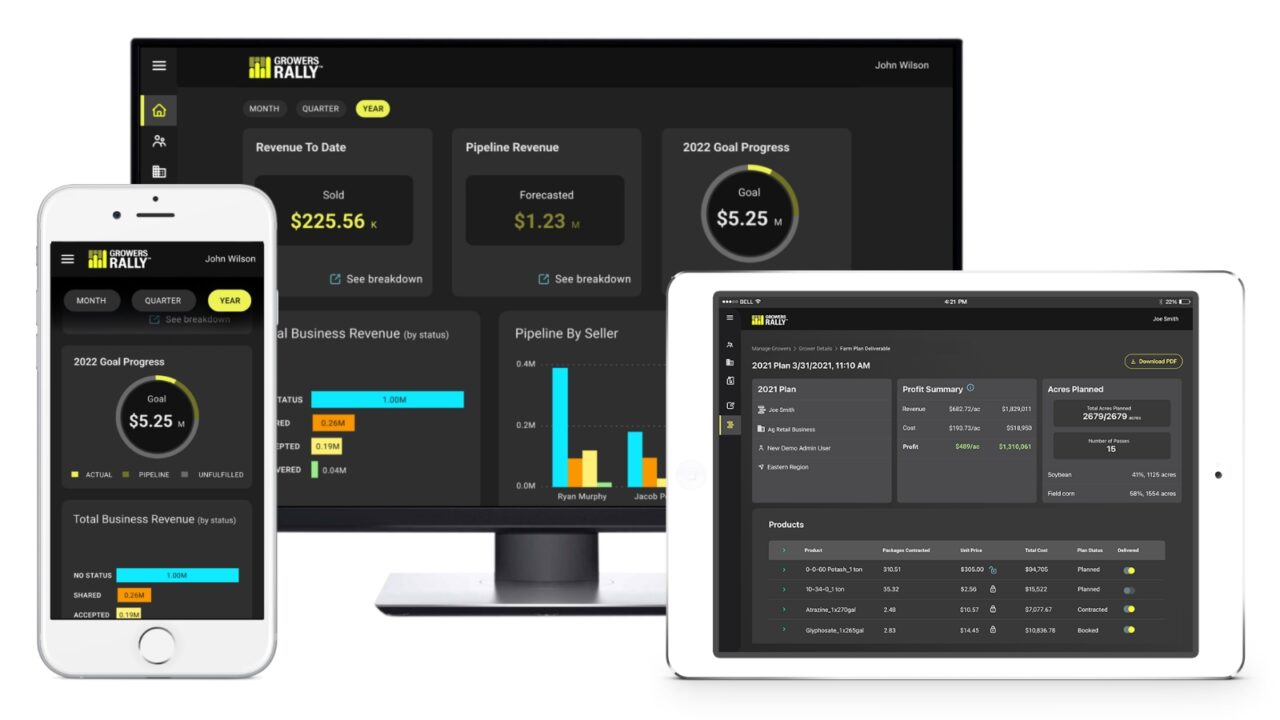Precision Agriculture Survey: What’s Next?
With the recession in the general economy causing fallout in the agricultural industry, there’s a question about what comes next for precision technology and services. Two areas explored further in the 14th Annual Precision Agriculture Survey were which emerging precision technologies would have the most impact on agricultural dealers’ businesses and what current barriers prevent further growth and expansion of precision agriculture. Investments made in a technology during a period of tight financial times may be a strong indicator of how integral that technology has become to a business. Based on survey responses this year, precision technology has certainly become an integral part of many crop input dealerships’ businesses.
When asked which technologies would have the most impact on their businesses in the future, the most common technologies mentioned by survey respondents were improvements in the overall use of GPS (especially with controller-driven application) and improvements in guidance systems (autosteer). Several respondents specifically mentioned RTK (real-time kinematic) satellite navigation and how the improved accuracy would be of real benefit to the effectiveness of precision technology. Some of the comments included:
“I feel VRT (variable-rate technology) will have the most effect. EPA regulations eventually will mandate nutrient runoff control in the Great Lakes watershed, especially now with a green-friendly administration in Washington, DC.” (OH)
Mapping Updates
Improvements and changes in mapping technologies were mentioned by several respondents. Several respondents mentioned the importance of having more accurate digitized maps and maps being compatible across different technologies. Comments included:
“Digitized soil types mapping.” (IL)
Another closely related area was using yield data and integrating it with other data for better analysis. Developing fertilizer application recommendations based on yield replacement was seen to be the next step:
“Increase in VRT fertilizer utilizing customers’ GPS maps from the combine to replace nutrients removed from previous years.” (IL)
“Precision planting is the next big thing in our area. Also started with electrical conductivity (EC) mapping — got some guy going to try it and overlay their grids to that.” (IA)
“Yield data and other farm data management services: So many of our customers have the info or the ability to collect the info but lack the time, drive, or understanding of how to manage and utilize various data (yield maps, application records, as-applied, etc.).” (SD)
“[Combining] data from inputs all the way through yield. Data is more important than application. Growers want details on yield results from what is working and what is not.” (IA)
Survey respondents were asked to rate a series of issues as to how significant a barrier they were to the growth and expansion of precision agriculture. This was the same list of barriers that we asked about last year and in 2004 to see what impact the global recession has had on the potential growth of precision technologies. Figures 9, 10, and 11 show the percentage of respondents who agreed with each customer, dealer, and technology issue listed (rated a four or five out of five, where five is “strongly agree”).
The biggest customer issue impacting precision services this year is farm income, with half of the respondents indicating it would be a barrier to the expansion of precision agriculture in their area, compared to only one-third a year ago. The effect of income seemed to be much more limiting than the cost-benefit trade-off which did not change from last year. This suggests that the barrier is grower financial conditions, not a problem with reconciling the cost with expected benefits.
Most of the dealer-specific issues were no more important a barrier this year than they were a year ago, with several issues actually being mentioned by fewer respondents. Pressure on service fees and high equipment costs were both less of an issue in 2009 than in 2008.
One of the biggest drops in concern was the issue of being able to create a precision program that was significantly better than a traditional program — declining from over one-third of the respondents rating it a barrier in 2008 (37%) to only 28% of the respondents in 2009. This is consistent with the other survey results that suggest as fertilizer prices remain relatively high, applying fertilizer material in a more “precise” manner is seen to be more effective.
The only technology issue that was rated more of a problem in 2009 was technology that is incompatible across equipment, with almost half of the respondents reporting it was a barrier to expansion. With several respondents indicating they wanted to integrate grower data such as yield map data with application data and EC data, the lack of compatibility may become more of a barrier until changes in software catch up. The overall cost of precision was less of a barrier than last year or 2004.
Summary
Overall, precision agriculture has become much more accepted as part of a grower’s way of farming as well as in the retail’s business. As money becomes tighter, the need to integrate precision data/information across equipment types more easily and with more accuracy and effectiveness becomes a bigger challenge. Results would suggest that growers and dealers believe that precision technology plays a bigger role when there is financial pressure.





